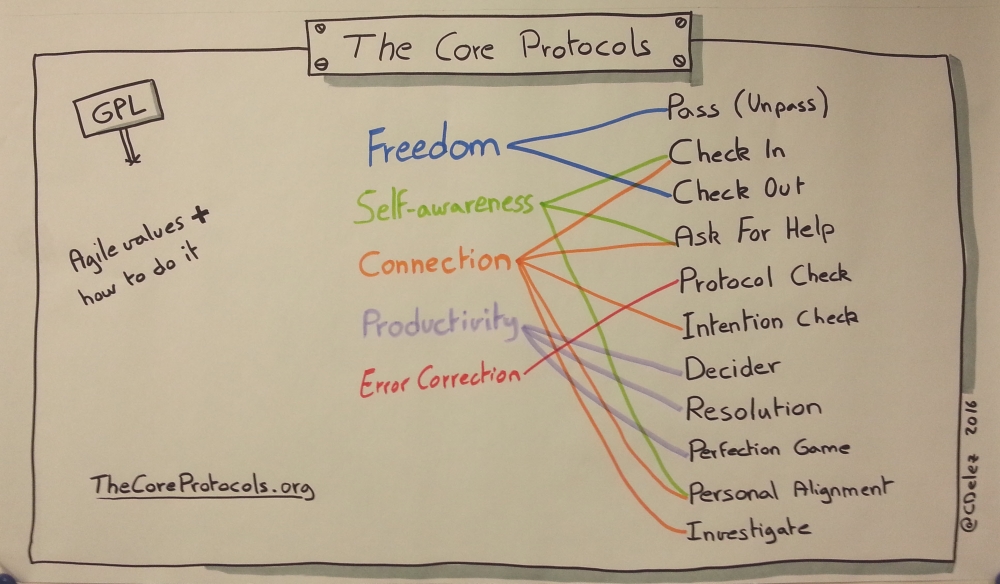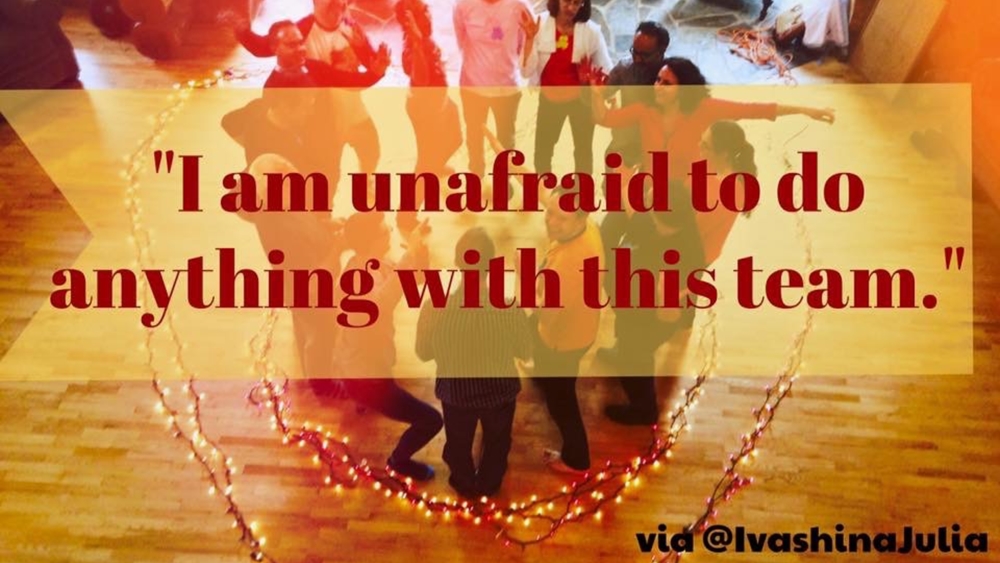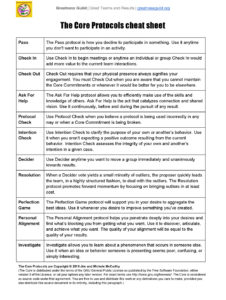by Christian Delez
The Disconnect Issue
I often experience strange human behavior in our world including people who talk about others in bad ways, people who spend too much time discussing problems instead of finding solutions, and people who blame others for their mistakes.
In addition to that, authority figures so often represent a culture of fear in organizations. When the boss walks in the room, nobody talks. During meetings, we hear and accept words we don’t want to. In disconnected teams, each team member has a different non-aligned goal.
There is another way to be. It’s called connecting.
In today’s world, we are all connected and almost everyone has access to all of the knowledge the world provides. Millennials are entering the workforce as the most educated generation we have ever had. They know how to tap into the riches of knowledge and they want something marvelous: happiness and meaning in life and at work. This is something the older generation wants more of too, but it hasn’t been the norm for them and not usually easily accessible.
Technology automates most of the easy tasks but tasks left to humans are the most complex. For such complexity, we need a team that deeply interacts and communicates. This group of diverse individuals can bring all of their passion and energy to the shared vision of the team in order to deliver great products and services.
This post shows how to create these happy teams, on purpose, every time.
Human connection by practicing The Core Protocols

I measure the human connection in any group or team with two things.
- With the number of big laughs I hear per day.
- With the speed and depth of conversations between people: Are they communicating authentically, smoothly, quickly and/or with humor?
Such teams have a gift — freedom. Freedom to do anything they want and be who they are. They are free to access their human nature. Free to go to work without a mask and show their full human properties. Freedom is the key to human connection and the building of a great culture.
There is a powerful and free tool to achieve freedom: The Core Protocols and Commitments. It is the work of Jim and Michele McCarthy after many years of studying hundreds of teams and thousands of people.
The Core Commitments are the promises at the heart of the Core Protocols. They are like a constitution, whereas the Core Protocols are more like regulations that are meant to express this constitution. The Core Commitments are the basic rules each person commits to. The Core Protocols enable high communication bandwidth.
Once you and others agree on the rules of the Core Commitments, you can start friendly cross-checking each other’s behavior toward improving your connection. You can use “Protocol Check” protocol for that, see below the Error Correction group.
We will now detail the five groups of Protocols to explain how it works. The first group is Freedom. The Pass and Check Out protocols allow for freedom. No one can force you to do any activities. Let’s start practicing it now. If you don’t want to go on reading this blog post, you have the freedom to Pass/Unpass or Check Out without saying why.
The next group is self-awareness. Do I know what I want, and what my values and principles are? The Check In, Ask for Help and Personal Alignment protocols help you discover that.
When you know what you want and reveal it, and when others on your team reveal what they want, real human connection begins. At this point, people are connected, totally cohesive and supportive.
This then leads to the next connection step, which is Greatness on a team. The connection group has the same protocols as self-awareness and in addition the Intention Check and the Investigate protocols. Intention Check and Investigate help you connect at a deeper level to others by understanding their behavior and being able to respond accordingly. This also connects in respect of the Core Commitments. No fear is present, only happiness and love.
When you are on a team experiencing deep human connections and practicing the Core Protocols, you experience safety, happiness and the possibility to try crazy ideas which may lead to great solutions, innovations and breakthroughs.
Turn up the good! Find something that’s working and turn it up to 11.
Woody Zuill, originator of Mob Programming and #NoEstimates
On a deeply connected team, productivity is also present. Decider, Resolution and Perfection Game protocols enhance that productivity. Decider and Resolution help make quick decisions and adjustments in a team. The Perfection Game is a powerful positive psychology based feedback mechanism which helps amplify the positives. It is perfect for agile retrospectives and much more.
Being human is hard and maintaining a deep connection is even harder. In the Error Correction group, we have the Protocol Check protocol helps keep people aligned with their commitments. You use this protocol when you detect somebody violating the Core Commitments and Core Protocols by friendly reminding that person the rules we all commit to.
Build a great team

The team is the new product, so build a great team! A team with great human connections and in a state of shared vision is at least ten times better — happier, faster, more productive and more fun to work with. The Core Protocols and Commitments provide tools to create joy, power and happiness for teams.
By the way, once you have such a team, there is no need to break away from it at the end of a project. Simply give that team a new challenge and you’ll be surprised by how quickly they come up with great solutions.
And don’t think this only works bottom-up, the leadership and executive teams also fully benefit from having human connection and a shared vision. It even expands in the magnitude of positive effects on everyone within the organization. This exercise can dramatically benefit them too.
Today, many businesses are moving to the agile way of doing things, which opens up more opportunities for enhancing human connection. We touched on one today, and below are links to study more.
According to Harold Shinsato, there are 3 important things in modern agile:
- Building Great Teams with Core Protocols (which we learned about today)
- Mob Programming
- OpenSpace Agility
How to enhance your human connection in a disconnected world
1: Find a podcast, learn and apply the tip
Browse the list of Core Protocols podcast episodes. Choose one topic and listen. Each podcast has something to take away and try or a sort of reflective challenge..
2: Try a protocol
Look at the Core Protocols Cheat Sheet with the 11 protocols. Have a look at the picture of the Core Protocols with the Freedom, Self-Awareness, Connection, Productivity and Error Correction groups. Choose the area in your life where you’d like to see an improvement. Pick a related protocol and try it! At home, in a relationship or at work.
3: TDC – Test Driven Connection
This challenge is targeted to people who love test-driven development (TDD). Here we apply the concept to human connection. Choose a human connection you want to achieve (pass the test). Write a test down concerning that Core Protocol or Commitment. Find a partner and give him the paper with the test you want to pass. Your partner will execute the test some days later.
Example:
- Challenge: Christophe, will you run this test on Tuesday?
- Assertion: I asked for help from my boss.
You can repeat the test daily until it passes. When it fails, you can work to change something such that the test pass next time.
4: Amplify and have conversations
Simply print the first two pages of the Core Protocols cheat sheet and share it visibly in a common space somewhere at work. Remote teams can share it through their messaging channel. You can manually add the sentence “call {your name & phone number} to talk about it” on the paper and see who calls and which conversations it generates.
5: Play a connection game
You like games? I do. Try one of these three games below:
- The Check-In Game: Make a die out of paper or other material. Write Pass, Mad, Sad, Glad, and Afraid, on five sides and then leave the sixth one blank. Now just find one or more teammates and play the Check In and Pass Protocols. Each person rolls the die once and says a sentence with the word on the die side. The blank side means you can choose any of the four values. Pass, means skip your turn. Use the website protocols reference for examples of typical sentences.
- The Say More Game: Is there someone you want to learn more about? Play the Say More game based on the Investigative protocol. The game contains powerful open questions on cards. You distribute them to one person who investigates the other. After a period of about 15 minutes, you take a break to change roles. This game engages deeper conversation and enables human connection.
- CultureQs Game: Do you have a team with different cultures from different countries? Play the icebreaker and connection game CultureQs. This is a board game with die and different types of questions about culture and the way people perceive life and relation. Each person rolls a die, pick one question and has the freedom to answer the question or pass if he/she wants. You quickly get to learn how people behave and how to interact at best with each. This is a facilitated game you can plan for your team in the future.
Want more?
Here are some references to look into regarding the topic of human connection:
- Magnificent 20 min podcasts
- The Core Protocols PDF download (free thanks to GPL-General Public License)
- The Core Protocols Cheat Sheet
- Interview of Jim and Michele McCarthy about the Core Protocols
- Book: The Core Protocols : A Guide to Greatness
- Book: Software For Your Head: Live in Greatness
Key takeaways on human connection
What did we learn from these experiments?
- Always use a team for difficult tasks.
- Reject mediocrity and negativity.
- Amplify, turn up the goods! We want more of that!
- Connect deeply, go beyond the façade.
- Enjoy life, the universe and everything!
The most exciting breakthroughs of the twenty-first century will not occur because of technology, but because of an expanding concept of what it means to be human.
John Naisbitt, author of Megatrends
And once you’ve tried these out, tell us below about your experience.


